第57章 ARSENIC A LA BRETONNE(14)
Not long after the death of this daughter the Mowbrays removed to Hendon, Sunderland, and here a sixth child was born.It proved to be of as vulnerable a constitution as its brothers and sisters, for it lasted merely a year.Four months later, while suffering from an injured foot, which kept him at home, William Mowbray fell ill, and died with a suddenness comparable to that which had characterized the deaths of his progeny.His widow found a job at the local infirmary, and there she met GeorgeWard.She married Mr Ward, but not for long.In a few months after the nuptials George Ward followed his predecessor, Mowbray, from an illness that in symptoms and speed of fatality closely resembled William's.
We next hear of Mary as housekeeper to a widower named Robinson, whose wife she soon became.Robinson had five children by his former wife.They all died in the year that followed his marriage with Mary Ann, and all of `gastric fever.' The second Mrs Robinson had two children by this third husband.Both of these perished within a few weeks of their birth.
Mary Ann's mother fell ill, though not seriously.Mary Ann volunteered to nurse the old lady.It must now be evident that Mary Ann was a `carrier' of an obscure sort of intestinal fever, because soon after her appearance in her mother's place the old lady died of that complaint.
On her return to her own home, or soon after it, Mary was accused by her husband of robbing him.She thought it wise to disappear out of Robinson's life, a deprivation which probably served to prolong it.
Under her old name of Mowbray, and by means of testimonials which on later investigation proved spurious, Mary Ann got herself a housekeeping job with a doctor in practice at Spennymore.Falling into error regarding what was the doctor's and what was her own, and her errors being too patent, she was dismissed.
Wallbottle is the scene of Mary Ann's next activities.Here she made the acquaintance of a married man with a sick wife.His name was Frederick Cotton.Soon after he had met Mary Ann his wife died.She died of consumption, with no more trace of gastric fever than is usual in her disease.But two of Cotton's children died of intestinal inflammation not long after their mother, and their aunt, Cotton's sister, who kept house for him, was not long in her turn to sicken and die in a like manner.
The marriage which Mary Ann brought off with Frederick Cotton at Newcastle anticipated the birth of a son by a mere three months.With two of Cotton's children by his former marriage, and with the infant son, the pair went to live at West Auckland.Here Cotton died--and the three children--and a lodger by the curious name of Natrass.
Altogether Mary Ann, in the twenty years during which she had beenmoving in Cornwall and about the northeastern counties, had, as it ultimately transpired, done away with twenty-four persons.Nine of these were the fruit of her own loins.One of them was the mother who gave her birth.Retribution fell upon her through her twenty-fourth victim, Charles Edward Cotton, her infant child.His death created suspicion.The child, it was shown, was an obstacle to the marriage which she was already contemplating--her fifth marriage, and, most likely, bigamous at that.The doctor who had attended the child refused a death certificate.In post-mortem examination arsenic was found in the child's body.Cotton was arrested.
She was brought to trial in the early part of 1873 at Durham Assizes.As said already, she was found guilty and sentenced to death, the sentence being executed upon her in Durham Gaol in March of that year.Before she died she made the following remarkable statement: I have been a poisoner, but not intentionally.''
It is believed that she secured the poison from a vermicide in which arsenic was mixed with soft soap.One finds it hard to believe that she extracted the arsenic from the preparation (as she must have done before administering it, or otherwise it must have been its own emetic) unintentionally.
What advantage Mary Ann Cotton derived from her poisonings can have been but small, almost as small as that gained by Helene Jegado.Was it for social advancement that she murdered husbands and children? Was she a `climber' in that sphere of society in which she moved? One hesitates to think that passion swayed her in being rid of the infant obstacle to the fifth marriage of her contemplation.With her all o'er- teeming loins,'' this woman, Hecuba in no other particular, must have been a very sow were this her motive.
But I have come almost by accident on the word I need to compare Mary Ann Cotton with Jegado.The Bretonne, creeping about her native province leaving death in her track, with her piety, her hypocrisy, her enjoyment of her own cruelty, is sinister and repellent.But Mary Ann, moving from mate to mate and farrowing from each, then savaging both them and the litter, has a musty sowishness that the Bretonne misses.
Both foul, yes.But we needn't, we islanders, do any Jingo business in setting Mary Ann against Helene.